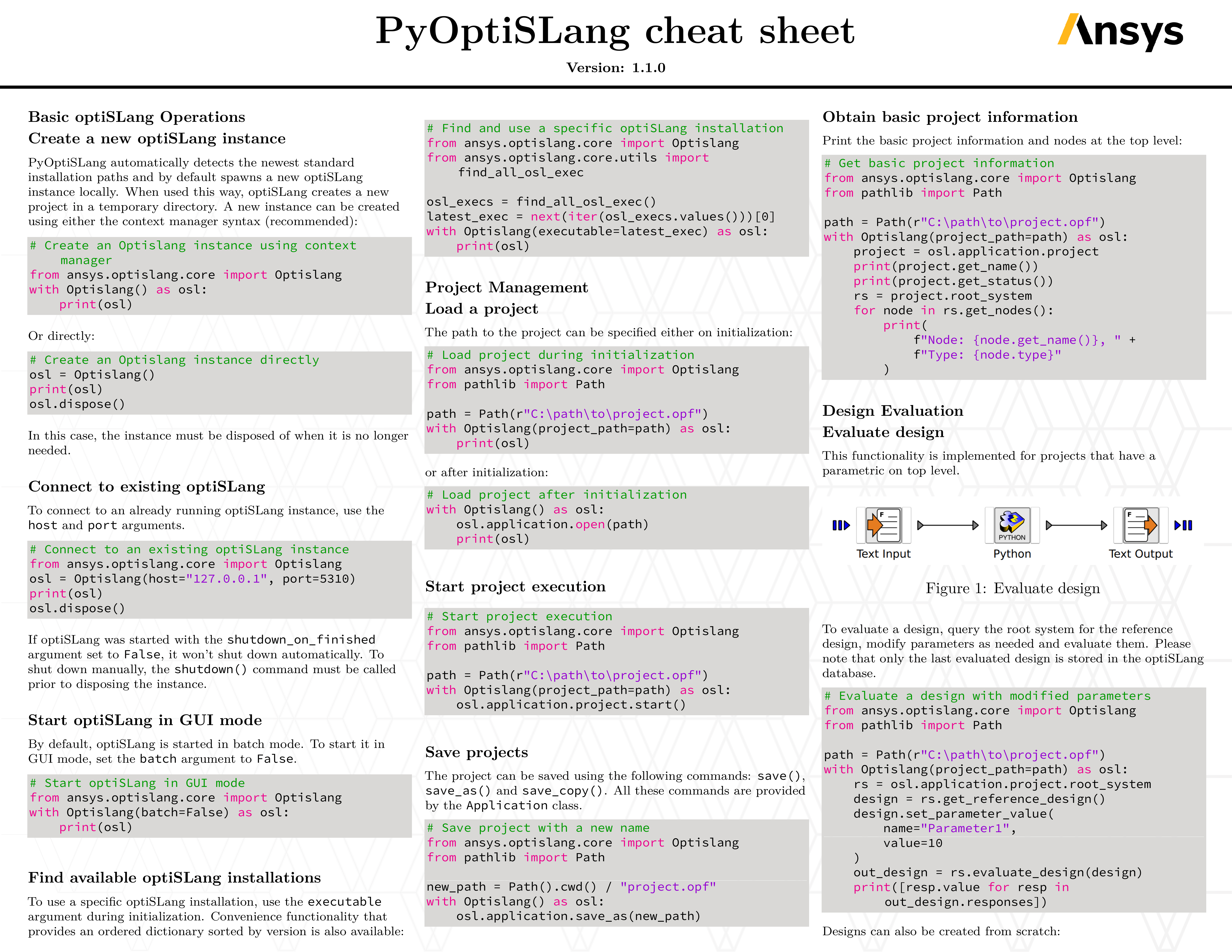PyOptiSLang documentation 1.4.1#
Introduction#
Ansys optiSLang is a constantly evolving, leading-edge answer to the challenges posed by CAE-based RDO (Robust Design Optimization). Its state-of-the-art algorithms efficiently and automatically search for the most robust design configuration, eliminating the slow, manual process that used to define RDO.
What is PyOptiSLang?#
PyOptiSLang is part of the larger PyAnsys effort to facilitate the use of Ansys technologies directly from Python. PyOptiSLang implements a client-server architecture. Communication between PyOptiSLang (client) and the running optiSLang process (server) is based on the plain TCP/IP technology. However, you need to interact only with the Python interface.
You can use PyOptiSLang to programmatically create, interact with, and control an optiSLang project. Additionally, you can use it to create custom scripts that can speed up and automate simulations.
PyOptiSLang lets you use optiSLang within a Python environment of your choice in conjunction with other PyAnsys libraries and external Python libraries.
Features#
The ansys-optislang-core package provides these features:
Ability to launch optiSLang locally or connect to the remote optiSLang server. For more information, see OptiSLang instance management.
Basic commands such as those for opening, saving and running projects as well as queries to obtain information about projects. For more information, see Basic usage.
Executing Python commands from the optiSLang Python API. For more information, see Executing commands from the optiSLang Python API.
Evaluate designs on root project level. For more information, see Design evaluation.
Create and connect nodes. For more information, see Create workflow.
Documentation and issues#
In addition to installation and usage information, the PyOptiSLang documentation provides API member descriptions, examples, and contribution information.
On the PyOptiSLang Issues page, you can create issues to submit questions, report bugs, and request new features. This is the best place to post questions and code.


